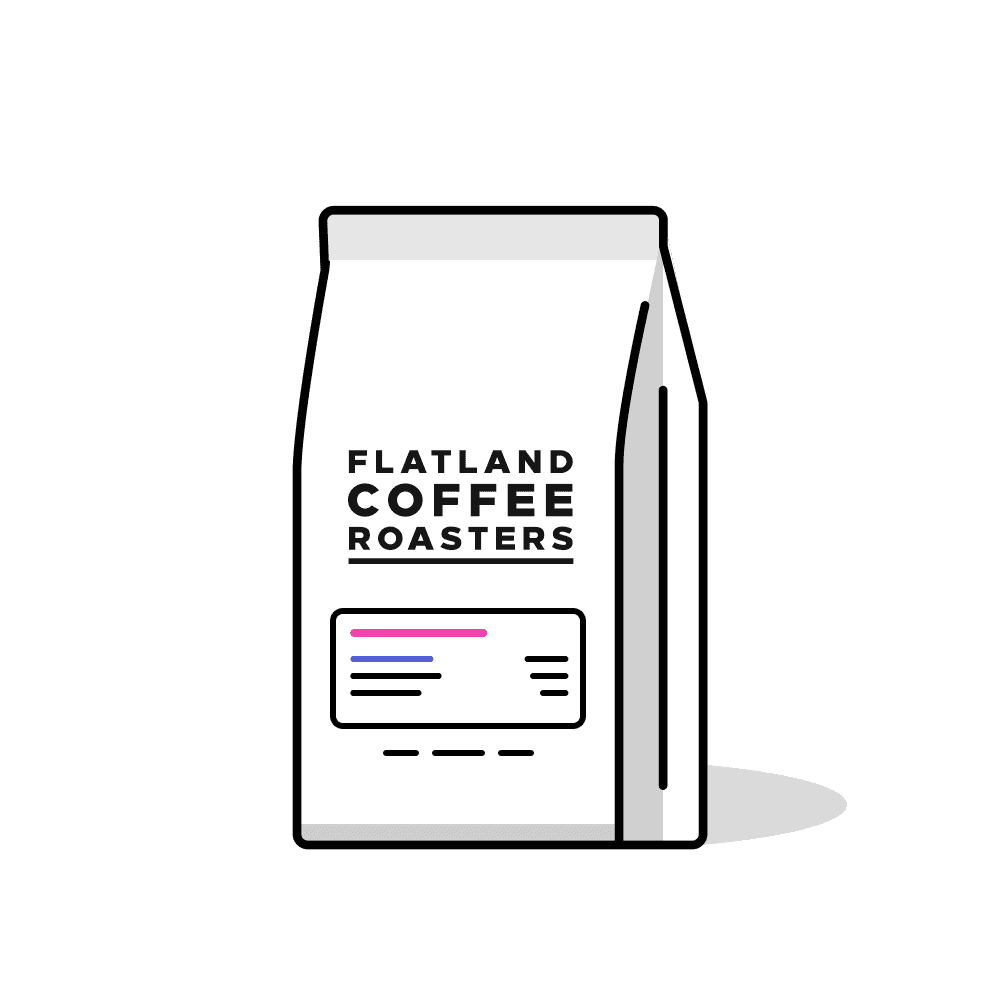Th3rdwave Directories
Cafés
Roasters
Coffees
Guides
Awards
Th3rdwave Coffee Club
Subscription
Gift subscription
Current edition
Past editions
Shop
Advent Calendar
Coffee games
Th3rdwave Wallet
Loyalty cards
Gift cards
Th3rdwave for cafés
Th3rdwave for roasters
Get free coffee
Kaffa Bitta
Keffa is a zone in the South West Region of Ethiopia. It is bordered by 3 other prolific coffee producing regions: Oromia, Gambela, and Sheka. The area is part of the “Eastern Afromontane biodiversity hotspot” and is characterized by a rich fauna and flora with many endemic species.
This coffee is sourced from the various farmers around the Maru Mengesha Keto washing station in Degakela, Keffa. Most Ethiopian producers are small-scale farmers who use traditional methods to grow plants, often wild coffee in backyard "gardens" where batches are usually organic by default. The red cherries in this batch were selectively hand-picked and delivered to the washing station. The coffee is then pulped (using a manual pulper) and fermented in open vats for 24-36 hours, depending on weather conditions. Finally, the coffee is washed and soaked before being dried for 15 days on raised African beds.
The resulting cup reminds us of vanilla ice cream, peach and lemon.
This coffee is sourced from the various farmers around the Maru Mengesha Keto washing station in Degakela, Keffa. Most Ethiopian producers are small-scale farmers who use traditional methods to grow plants, often wild coffee in backyard "gardens" where batches are usually organic by default. The red cherries in this batch were selectively hand-picked and delivered to the washing station. The coffee is then pulped (using a manual pulper) and fermented in open vats for 24-36 hours, depending on weather conditions. Finally, the coffee is washed and soaked before being dried for 15 days on raised African beds.
The resulting cup reminds us of vanilla ice cream, peach and lemon.
Keffa is a zone in the South West Region of Ethiopia. It is bordered by 3 other prolific coffee producing regions: Oromia, Gambela, and Sheka. The area is part of the “Eastern Afromontane biodiversity hotspot” and is characterized by a rich fauna and flora with many endemic species.
This coffee is sourced from the various farmers around the Maru Mengesha Keto washing station in Degakela, Keffa. Most Ethiopian producers are small-scale farmers who use traditional methods to grow plants, often wild coffee in backyard "gardens" where batches are usually organic by default. The red cherries in this batch were selectively hand-picked and delivered to the washing station. The coffee is then pulped (using a manual pulper) and fermented in open vats for 24-36 hours, depending on weather conditions. Finally, the coffee is washed and soaked before being dried for 15 days on raised African beds.
The resulting cup reminds us of vanilla ice cream, peach and lemon.
This coffee is sourced from the various farmers around the Maru Mengesha Keto washing station in Degakela, Keffa. Most Ethiopian producers are small-scale farmers who use traditional methods to grow plants, often wild coffee in backyard "gardens" where batches are usually organic by default. The red cherries in this batch were selectively hand-picked and delivered to the washing station. The coffee is then pulped (using a manual pulper) and fermented in open vats for 24-36 hours, depending on weather conditions. Finally, the coffee is washed and soaked before being dried for 15 days on raised African beds.
The resulting cup reminds us of vanilla ice cream, peach and lemon.
Coffee origin
Country
Ethiopia
Region
Keffa
Variety
heirloom
Altitude
1800 - 2000 m
Farm
Small producers of Degakela village
Producer
Maru Mengesha Keto washing station
Roast level
Light
Process
washed
Tastes like
🍦
vanilla ice cream
🍑
peach
🍋
lemon
Community reviews
😃
3.7 Very Good
5 Reviews
Show all reviews
Recipes
Check out more in the App










